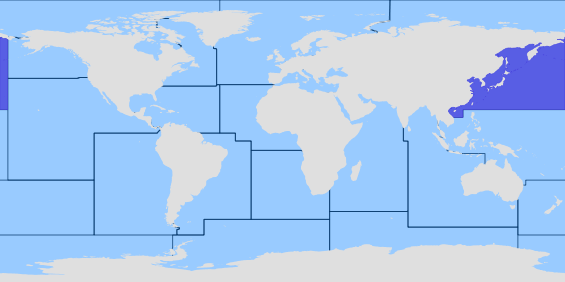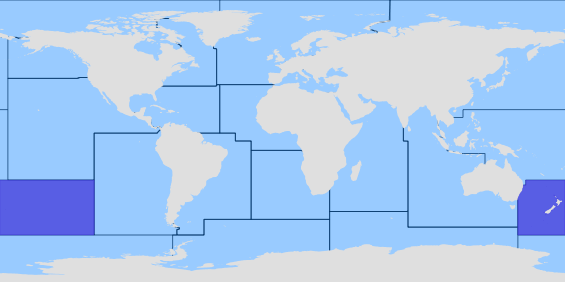EngelsThe bramble shark Echinorhinus brucus has thorn-like denticles on body which are very large (single denticles up to about 15mm in basal diameter in adults), sparse irregularly distributed and thorn-like with smooth basal margins, some bases fused into compound plates. Dorsal surface dark purplish-grey to brown with white denticles, ventral surface paler; sides and back may have dark spots. Tooth count 20-26/21-26.As with the other member of the family Echinorhinidae, it has a relatively short snout and stout body; two small spineless dorsal fins, close together, towards posterior part of body and originating behind pelvic fin origin. No anal fin and subterminal notch on caudal fin. Small spiracles, very short labial furrows and teeth on both jaws alike, with a central oblique bladelike cusps with up to 3 cusplets on each side (absent in juveniles) (Ref. 247, 6871, 5578).
Vertaling weergeven
Vertaald uit het Engels door BING
Deze vertaling is louter indicatief: Op grond van de beperkte kwaliteit van de brontekst zijn morfologische omschrijvingen uitsluitend beschikbaar in het Engels in de BETA-versie van het systeem. In toekomstige uitgaven zal ook meertalige informatie beschikbaar komen.
NederlandsDe bramble haai Echinorhinus brucus heeft thorn-achtige denticles op lichaam die zeer grote (één denticles tot ongeveer 15 mm in diameter van de basale in volwassenen), schaars onregelmatig verspreid en doorn-achtig met gladde basale marges, sommige honken gesmolten in samengestelde platen. Dorsale oppervlak paarsachtig-donkergrijs tot bruin met witte denticles, ventrale oppervlak bleker; zijkanten en achterkant wellicht donkere vlekken. Tand tellen 20-26/21-26.As met het andere lid van de familie Echinorhinidae, het heeft een relatief korte snuit en stout lichaam; twee kleine spineless dorsal fins, dicht bij elkaar, naar achterste deel van het lichaam en van oorsprong achter pelvic fin oorsprong. Geen anaalvin en subterminal notch op caudal fin. Kleine spiracles, zeer korte labial furrows en tanden op beide kaken gelijk, met een centrale schuine bladelike cuspen met maximaal 3 cusplets aan elke kant (afwezig in jonge exemplaren) (Ref. 247, 6871, 5578).















